| The Mountain Hare |
|
The sighting of a Mountain Hare is one of the great sights for anyone walking through the high mountains, particularly so during the winter months if there is snow on the ground and when the hares have their white winter coat. The Mountain Hare has a quite large range across Northern Europe, but in Britain it is confined to Scotland (other than a small reintroduced programme of Mountain hares in the Peak District and in the Isle of Man). they are regularly hunted by man and although the exact population is unclear, the numbers have suffered significantly in recent years. The average life span in the wild is about 3 years. They are also called "Blue Hares". The Mountain Hare is a true Arctic species which is thought to be a true native species. They are amongst the most hardy of our British mammal species and are found in some of our highest and coldest mountain areas including the high mountain plateau of the Cairngorms. As such they are sometimes referred to as "White Hare" or "Arctic Hare".
They grow to 45 to 65cm in length and can weigh anything between 2 and 5 kg, the females are slightly heavier than males. Their ears are proportionally much bigger than the rest of their heads and have black tips almost the whole year around. The Mountain hare is slightly smaller than the European Brown Hare which was though to have been introduced into Britain by the Romans. Rabbits are also non native and are an introduced species. Rabbits, and Brown Hare tend to run in a zig zag manner, but Mountain Hares run in a straight line at a very fast speed and often directly up the hillside. They can reach speeds of 45+ mph, which is almost 80 kph. |
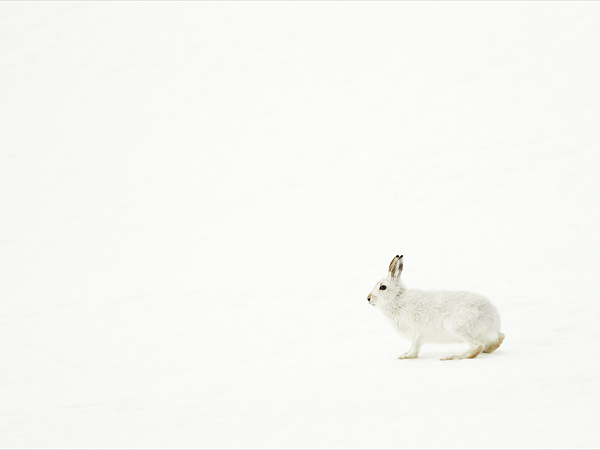 |
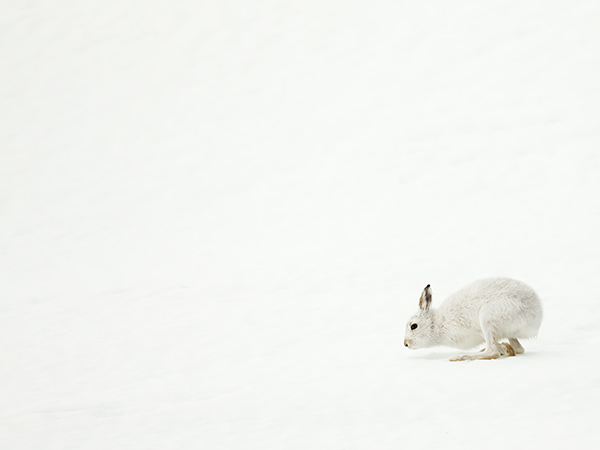 |
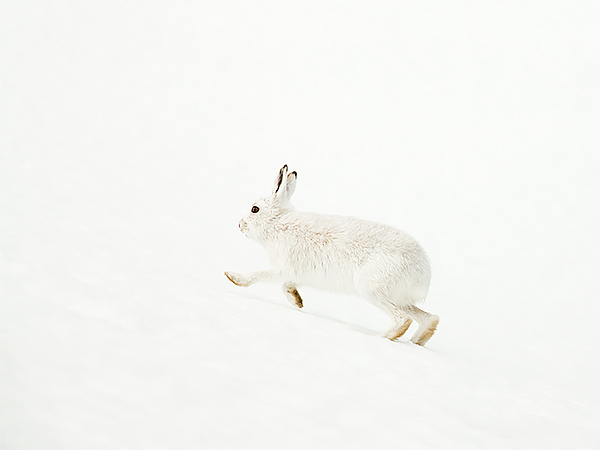 |
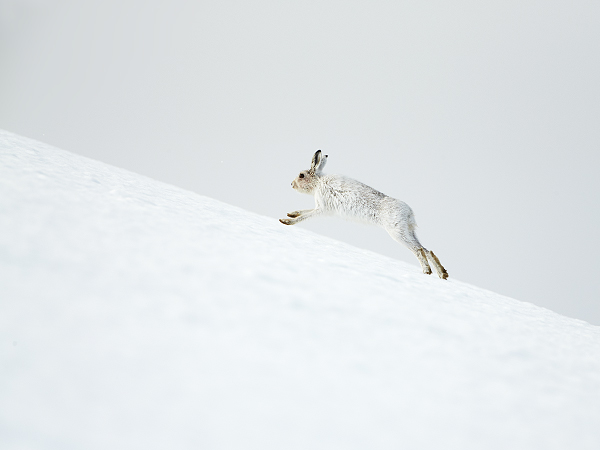 |
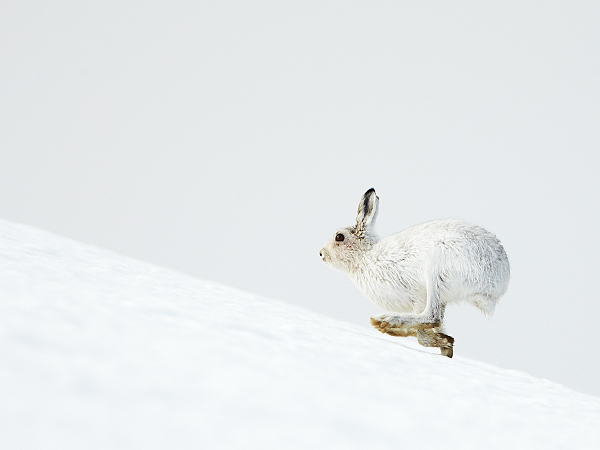 |
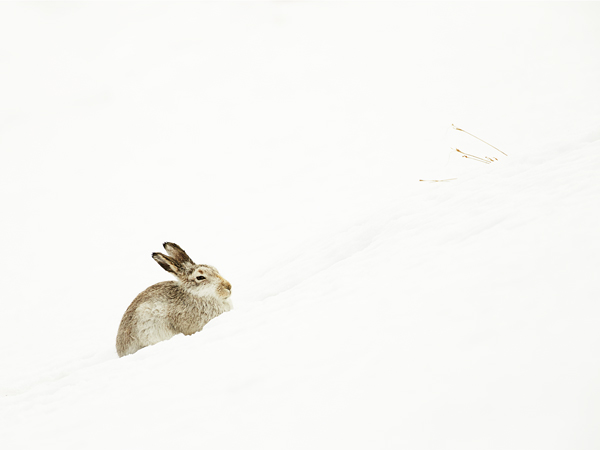 |
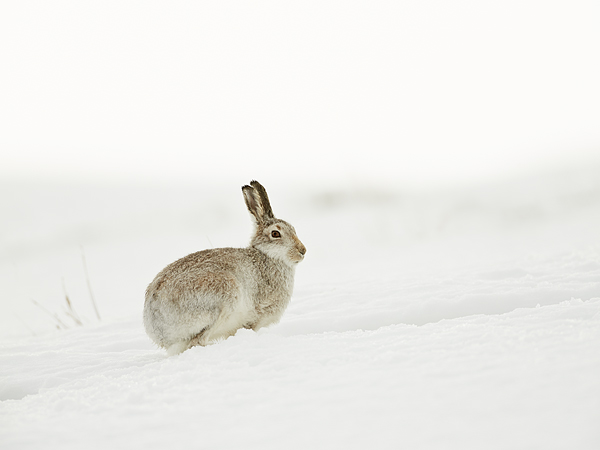 |
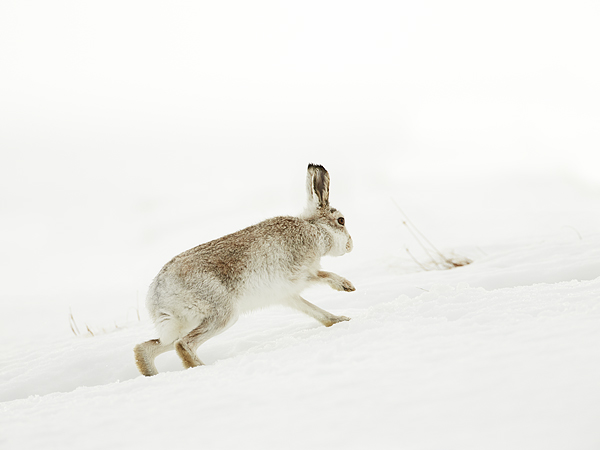 |
|
Survival for a mountain hare is all about camouflage, they need to be able to stay hidden from predators. The main natural predator is Golden Eagles which have excellent eye sight. As such the mountain hares change the colour of their coat to blend in with the surrounding mountains. This means that during early spring the coat is not quite as white and gradually turns to a brown colour. From a wildlife photography point of view, everyone wants to see and photograph white hares on a snowy background. this is obviously not always possible and there are sometimes good shots to be taken of hares with their winter coats on the mountainside which is its natural green and brown colour. But these images certainly don't look as natural. |
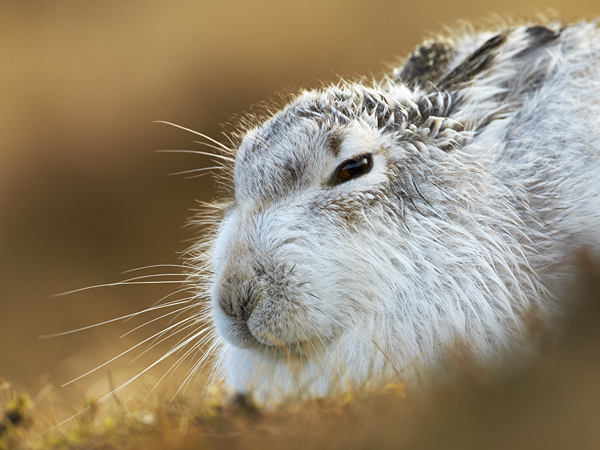 |
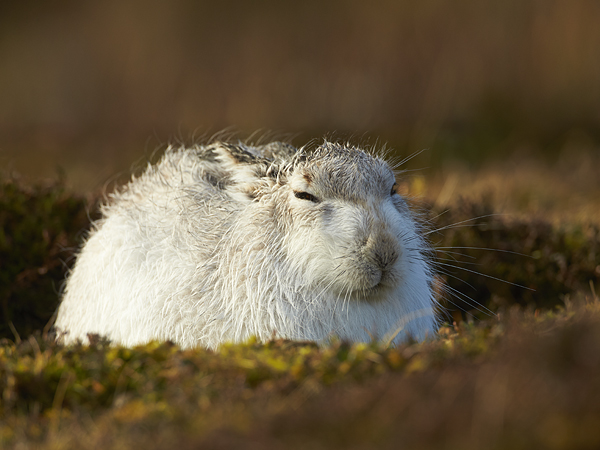 |
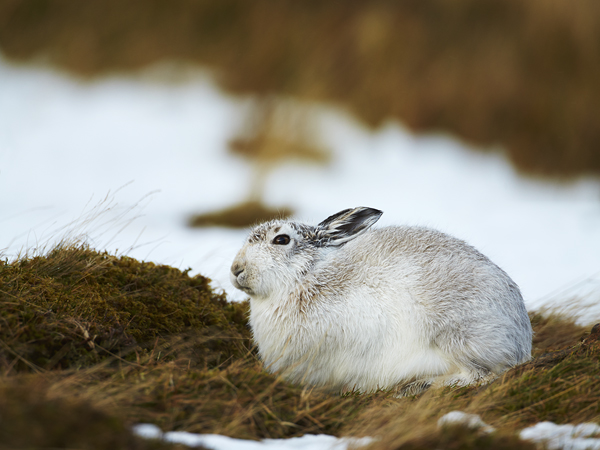 |
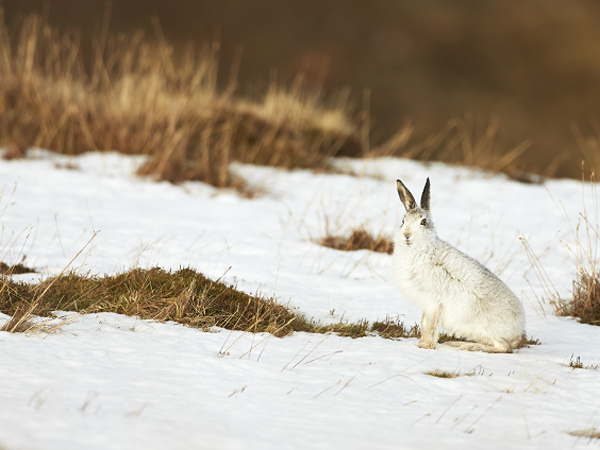 |
